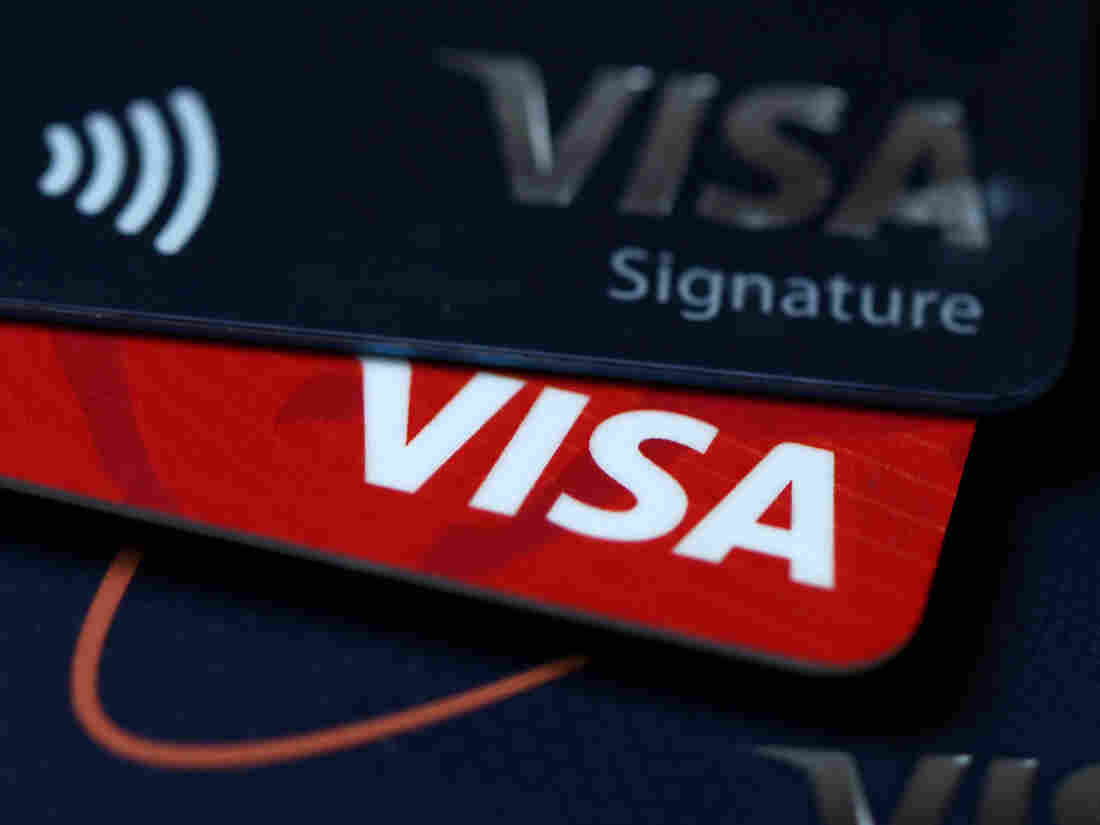Economy
More Americans are falling behind on credit card bills
More Americans are falling behind on credit card bills
3:55
Credit card delinquencies rose in the first three months of the year. According to the Federal Reserve Bank of New York, 1 in 6 card users are “maxed out,” using at least 90% of their credit limit.
Justin Sullivan/Getty Images
hide caption
toggle caption
Justin Sullivan/Getty Images
Credit card delinquencies rose in the first three months of the year. According to the Federal Reserve Bank of New York, 1 in 6 card users are “maxed out,” using at least 90% of their credit limit.
Justin Sullivan/Getty Images
More Americans are falling behind on their credit card bills.
About 8.9% of credit card balances fell into delinquency over the last year, according to the Federal Reserve Bank of New York — a sign that a growing number of borrowers are feeling the strain of rising prices and high interest rates.
“Everything is more expensive. Debt is more expensive. Rent is more expensive. Food, gas, everything,” says Charlie Wise, senior vice president at TransUnion, the credit reporting firm. “Even with relatively healthy wage gains we’ve seen over the last several years, many consumers just aren’t keeping up with the price pressures.”
Maxed out borrowers are a big concern
The New York Fed’s report shows the pain is not evenly spread. While many households are on solid financial footing, almost 1 in 5 Americans are “maxed out,” using at least 90% of their credit card limit. That’s worrisome, the report says, because maxed-out borrowers are much more likely to fall behind on their bills.
People under 30 and those who live in low-income neighborhoods were particularly likely to be maxed out, according to the report. Among Gen Z borrowers, about 1 in 6 were close to exhausting their credit, compared to 4.8% of baby boomers.
Roughly half of borrowers carry balances month to month
Overall credit card balances totaled $1.115 trillion in the first quarter of the year, $129 billion more than last year. For card users who pay their balance in full every month, that’s not a problem. But according to Bankrate, roughly 44% of borrowers carry credit card debt over from month to month.
“The credit card market is really one of these proverbial tale of two cities,” says Ted Rossman, senior industry analyst at Bankrate. “You have roughly half of card holders paying in full and getting great benefits like rewards and buyer protections. And then you have the other half more or less who can easily become trapped in an expensive debt cycle.”
Credit card debt is very costly, with the average interest rate topping 20%. Rossman says borrowers who make only the minimum monthly payment can take nearly two decades to pay down their debt. On an average balance of $6360, the interest alone would total $9500.
“Time is not your friend if you’re a consumer who’s struggling with debt,” says Mike Croxson, CEO of the National Foundation for Credit Counseling. “Odds are as you go through paying minimums, missing minimum payments and other things, those rates are going to continue to increase.”
Credit card delinquency rates are rising
Early in the pandemic, when spending opportunities were limited and the federal government was sending out relief payments, many people paid down their debts, and credit card delinquencies fell to historic lows.
That trend has now reversed itself. Credit card delinquencies have returned to pre-pandemic levels, despite rising wages and a low unemployment rate.
“The consumer has been quite strong through this recovery,” said a New York Fed researcher, who spoke on condition of anonymity. “One thing that might be concerning about this is why delinquency rates may be rising for consumers during what we see as a strong labor market and a strong economy. So the fact that we’re seeing these is something that we’re keeping an eye on.”
